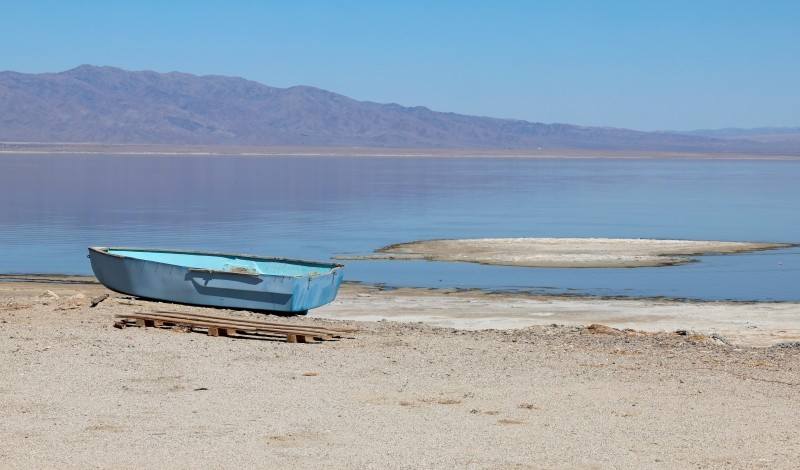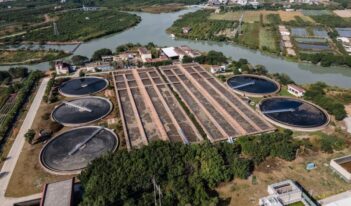
Scholars propose legal frameworks to enshrine water as a human right.
The right to water means that everyone should have access to safe, physically accessible, and affordable water for both personal and domestic use. Access to clean, safe, and affordable water is considered to be one of the cornerstones of human health and dignity—it was recognized as a fundamental human right by the United Nations in 2010.
Despite its recognition and prominence, the realization of this right varies across the globe. Recent events in Syria, for example, have left millions without access to clean water. In Southern Ukraine, over 95,000 citizens were recently provided clean water by the United Nations Development Programme. And in the United States and Europe, significant variations exist in the laws regulating water access.
In the United States, water rights are governed by a patchwork of federal, state, and local regulations, reflecting the decentralized nature of governance in a system some scholars have dubbed “water federalism.”
The development of this water rights system was not straightforward. In 1902, the U.S. Congress passed the Newlands Reclamation Act to fund irrigation projects throughout the west. This Act ushered in an era in which the national government had, according to some scholars, usurped state authority by means of federal supremacy. States were eventually granted the right to water control management within their borders by the U.S. Supreme Court in 1978, loosening the grip the federal government formerly possessed over the crucial resource.
Currently, although federal legislation like the Clean Water Act aims to protect water quality, no formal national policy explicitly recognizes water as a human right. The doctrine of prior appropriation—under which the first person to divert water for a “beneficial use” retains rights over the water—now dominates in the western states through common and statutory law. In contrast, eastern states often bestow riparian rights, which link water use to land ownership.
The affordability of water is also a growing concern in the United States. A 2022 study estimates that approximately 10 percent of U.S. households face challenges paying for “essential water and sewage services.” The study also demonstrates that these increased utility costs disproportionately affect low-income and African-American communities.
Europe adopts a more unified approach to water rights regulation. The European Union’s Water Framework Directive, established in 2000, mandates member states to achieve “good” water status for all water bodies and emphasizes sustainable management. Countries like France and the Netherlands have enshrined the right to water in their domestic laws, ensuring universal access and affordability. This cohesive framework facilitated the transition from a so called “market-approach” to a “rights-based approach,” leading to the rise of the Right2Water Movement. The framework has also raised public awareness of neoliberal policies throughout Europe.
Europe also grapples with disparities, particularly in rural and economically disadvantaged areas. A 2018 impact assessment concluded that 30 percent of Romanians and Latvians could face health risks from consuming polluted water. The Roma, the largest ethnic minority within Europe, also face obstacles in accessing clean water.
This week’s Saturday Seminar explores potential methods and hurdles in declaring water a human right.
- In an article in the Journal of Consumer Policy, Iris Benöhr, an associate professor at the U.K.’s Queen Mary University of London School of Law, proposes methods to promote both a right to water and sustainability. Attempts to implement water-pricing guidelines put forward by the European Commission have had limited success, and this cost-recovery system could lead to increased prices, Benöhr warns. Benöhr recommends implementing smart water meters, which have been linked to reduced water usage and lower bills. She also advocates for a new legal framework, wherein decisions related to water are regulated by procedural provisions, and those who access water are treated as responsible parties rather than rights holders.
- In an article in Water International, Jorge Garcia-Arias, Hug March, Nuria Alonso, and Mar Satorras discuss the remunicipalization of water in the city of Valladolid, Spain as a case study in how to nationalize water utilities and bolster water rights. Arias and several coauthors highlight a growing public consensus that the private sector need not have a monopoly on water utilities. The water company, according to the Arias team, is funded by tariffs that tax “water, sewerage and wastewater treatment and purification.” Arias and his coauthors note that the tariffs are not applied uniformly, with discounts for low-income households and those with large families. Arias and several coauthors contend that the remunicipalization of Valladolid’s water may be tenuous, as some political parties seek to re-privatize the resource.
- In a recent article in the Leiden Journal of International Law, Nina Reiners, a law professor at Norway’s University of Oslo, discusses how international law can evolve through multiple pathways beyond traditional state-led processes. Reiners argues that when states remain passive, actors such as non-governmental organizations and experts can drive legal change through alternative pathways. For example, Reiner points out that water rights evolved into an independent human right through a series of United Nations resolutions in 2010. Reiner emphasizes that this phenomenon demonstrates a “states-as-bystanders effect” where state inaction creates space for other actors to shape international law through interpretation and advocacy.
- In an article in the Public Land & Resources Law Review, practitioner Abigail R. Brown argues that Montana’s constitutional rights support the recognition of a human right to water. Brown points out that Montana’s state constitution includes an explicit right to individual dignity, which creates an affirmative obligation on the state to protect individuals against discrimination. Although the United States has not formally recognized the human right to water, Brown suggests that Montana’s constitutional right to dignity, combined with its environmental protections, could support such recognition at the state level. Brown recommends that Montana legislators build on existing constitutional protections and enact legislation explicitly recognizing a human right to water.
- In an article in the Washington University Law Review, Luis Inaraja Vera of the Gonzaga University School of Law argues that delayed implementation—when the effect of a regulation is deferred to allow time to minimize losses—is the most viable strategy to adapt water laws to meet the challenges posed by climate change-induced water scarcity. When compared to immediately effective reforms, Inaraja Vera notes, delayed implementation spreads economic impacts over time. Inaraja Vera explains that this delay could lead to a fairer and more effective water rights transition by minimizing public opposition and reducing exposure to legal challenges, such as constitutional takings
- In an article in Water Alternatives, Erin O’Donnell of Melbourne Law School, Cristy Clark of Canberra Law School, and Rachel Killean of Sydney Law School in Australia explain that the legal recognition of rivers as rights-bearing entities plays a key role in shifting norms in environmental law toward environmental justice. Highlighting cases such as the Whanganui River in New Zealand and the Atrato River in Colombia, O’Donnell, Clark, and Killean argue that granting rivers legal personhood integrates Indigenous worldviews and ecological principles into formal law. This approach, O’Donnell, Clark, and Killean suggest, not only protects ecosystems but also redefines human–water relationships, providing a framework for reconciling ecological sustainability and community needs.
The Saturday Seminar is a weekly feature that aims to put into written form the kind of content that would be conveyed in a live seminar involving regulatory experts. Each week, The Regulatory Review publishes a brief overview of a selected regulatory topic and then distills recent research and scholarly writing on that topic.



